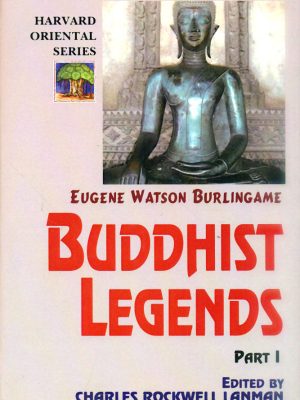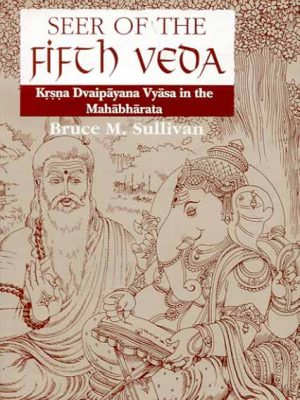-
Tulasidasa’s Sri Ramacaritamanasa: The Holy Lake of the Acts of Rama (A Romanized Edition)
Tulasidasa’s Sri Ramacaritamanasa: The Holy Lake of the Acts of Rama (A Romanized Edition)
The SHRI RAMACHARITAMANASA by Tulasidasa is the single most popular book among Hindus. This book has a huge appeal to the affluent and the poor, the learned and the uneducated, the elderly and the young, and the scholar and the ordinary man. It has done so for over four centuries. This one-of-a-kind version of the Ramacharitamanasa, which also includes the original text written by Tulasidasa as well as verse-by-verse translations into Hindi and English, was created with the goal of satisfying the growing interest that people have in epic literature. The translation that was done by a skilled academic does the original work justice in terms of its inherent depth and complexity. It has been crafted with the intention of being of help to Indian brothers and sisters who now reside outside of India and for whom Tulasidasa’s original may have been written in a dialect that was difficult to understand. A regular and genuine copy of the Ramacharitamanasa has been in high demand among the enormous Indian population that has relocated outside of India for a significant amount of time. This particular version is distinguished by the incorporation of Lavakushakanda, Shri Hanumanchalisa, and Shri Ramashalaka Prashnavali as one of its key features. Special care has been taken for making it useful to the Indian brethren living abroad to whom the dialect of Tulsidasa’s original may be somewhat incomprehensible. There has been a long-standing demand from the vast Indian community settled abroad for a standard and authentic edition of the Ramacharitamanasa
This version is based on our very first publication of Shriramacharitamanasa, which came out in 1988 and received widespread praise.
The current edition, which has been produced to fulfil their need by using the most up-to-date printing and processing processes, has been created to conform to the worldwide standard for works of literature.
The manner in which it is to be recited is detailed in an appendix that is presented on its own. The fact that book has key sections written by Indian, European, and American experts is another factor that contributes to its one-of-a-kind character.
comments on Tulasidasa’s Ramacharitamanasa. At the very end, you will find a dictionary that defines significant epithets and proper nouns.
Author
DR. R. C. PRASAD
₹3,000.00 -
-
-
Laddu Gopal Jhula – Kanha Jhula- Jhoola (Sagwan) Swing For Bal Krishna
Handcrafted colorful Laddu Gopal jhula is made by the talented and experienced Indian artisans using the best seasoned teak wood. You can use this Jhula to keep your dear Laddu Gopal or it can be used as a home decor also. It provides a unique look to your home, office or puja room. It can also be gifted on special occasions like naming ceremony, anna prashan, wedding and other special occasions. Jhula is coated with non-toxic finish which gives it a extraordinary look. The Chain is made of SS and the cotton cushion comes with a silky washable cover.
₹2,995.00₹3,200.00Laddu Gopal Jhula – Kanha Jhula- Jhoola (Sagwan) Swing For Bal Krishna
₹2,995.00₹3,200.00 -
The History of Hindustan (3 Vols.)
The History of Hindustan (3 Vols.)
The book is meticulously edited by Dahiya whorendered the original Anglo-Nordic script in modern english without disturbing the original diction and structure and has relied upon the works of Charles Jonston’s the system of Vedanra and on Lawrence Dawson in The Nuttall Encyclopaedia for transliteration and standerdization of spelling of proper names. This book is a must for all Research Centers, Institutes, Universities and Libraries and gives a contemporary account of the Muslim period in India.
₹2,995.00The History of Hindustan (3 Vols.)
₹2,995.00 -
-
₹2,950.00
-
-
₹2,750.00
-
Seer of the Fifth Veda: (Krsna Dvaipayana Vyasa in the Mahabharat)
Seer of the Fifth Veda: (Krsna Dvaipayana Vyasa in the Mahabharat)
Sage Krsna Dvaipayana Vyasa is generally considered to be the author of India’s most famous epic poem, the Mahabharat, which is written in the Sanskrit language. This research focuses on the portrayal of Vyasa in the Mahabharata, where he plays a significant role in the story that he is credited with writing. The many viewpoints presented in other works of literature, such as plays, Jataka stories, Arthasastra, and Puranas, contribute to an enlargement of the meaning that may be derived from Vyasa’s writings.
Author
BRUCE M. SULLIVAN
₹2,690.00 -
A Different Take: An NRI View of India in the Tradition of Ram, Krishn and Gandhi
Bal Ram Singh, PhD, has been a professor since 1990 and Henry Dreyfus Teacher-scholar since 1997 at UMass Dartmouth (until 2014) and at the Institute of Advanced Sciences (INADS), Dartmouth, Massachusetts. He has been visiting professor at Georgetown University, Harvard Medical School, Yang Ming University (Taiwan), and Jawaharlal Nehru University (India). He is currently the President of the Institute of Advanced Sciences and also the founder of Prime Bio Inc., a biotechnology based company.
Dr. Singh is Founding Director of the Botulinum Research Center, established in 2003 and currently located at INADS. He is also the Founding Director of the Center for Indic Studies at the University of Massachusetts Dartmouth.
Dr. Singh is an alumnus of Kamla Nehru Institute Science and Technology of Avadh University, Ayodhya, India, Jawaharlal Nehru University in New Delhi, India and Texes Tech University in Lubbock, TX, USA.
He has been conducting research on botulinum and tetanus neurotoxins, and also on yoga, mind and consciousness. He has published 13 books and over 300 articles, including articles related to India’s philosophy and traditions. He is Editor/Associate Editor of four journals, including Ayurveda Journal of Health and International Journal of Indian Culture and Business Management, Ayurveda – Health Happiness And Harmony Book Series, Motilal Banarsidass.
₹2,600.00 -
₹2,595.00
-
Leaves of A Pipal Tree: Aesthetic Reflections on some Hindu Myths and Symbols
Leaves of A Pipal Tree: Aesthetic Reflections on some Hindu Myths and Symbols
India is a civilisation of many images, a culture of many visual feasts, a tradition where the visible and the palpable are as important as the oral and the occurrent, where our highest truths are embodied in our kathas and gathas our songs and stories, where our temples are not only places of worship but equally a gallery of beautiful forms and figures where myth is as important as doctrine, where ancient memories are full of cherished narratives where mythic beings are reimagined
Author
HARSHA V. DEHEJIA
About the Author(s)
HARSHA V. DEHEJIA has a double doctorate, one in Medicine and the other in Ancient Indian Culture both from Bombay University, in India. His first two books, The Advaita of Art and Parvatidarpana have been acclaimed.
₹2,500.00 -
Gods Beyond Temples
Gods Beyond Temples
The holy is more of an experience than an idea in the Indian tradition, and it extends well beyond the confined spaces of an organised temple or even a shrine. The adherents of this religion, much like the gods of this tradition, are humble and unassuming, yet at the same time dignified and certain of themselves. Whether it be a tree that is revered or a naturally occurring stone that is revered, a river that is the embodiment of divinity itself, an ancestor that is worshipped, a fabric that is simply draped, a road side shrine on a busy street or a votive terracotta horse that was lovingly made and offered, a narrative scroll that holds its audience spell-bound; here is religion at work that is as spontaneous as it is intemperate. The rites and practises performed in honour of these deities are neither written nor canonised; nonetheless, whatever they may lack in grandeur, erudition, and formality, they more than make up for in the faith and passion that they inspire in those who participate in them. These sacred manifestations and expressions of the ordinary people have a tendency to be sidelined or dismissed by academics as well as the world at large, as minor or lesser gods worthy of curiosity but not of serious study. However, it is important to keep in mind that they have a beauty and presence of their own in the pluralistic Indian tradition.
About
HARSHA V. DEHEJIA
About the Author(s)
HARSHA V. DEHEJIA has a double doctorate, one in Medicine and the other in Ancient Indian Culture both from Bombay University, in India. His first two books, The Advaita of Art and Parvatidarpana have been acclaimed.
₹2,500.00Gods Beyond Temples
₹2,500.00



















